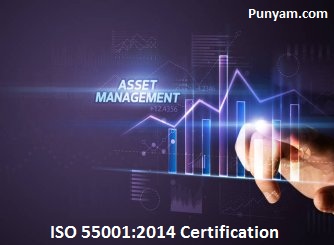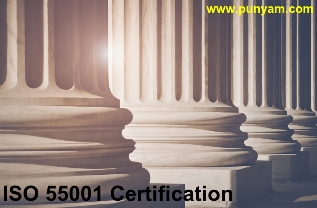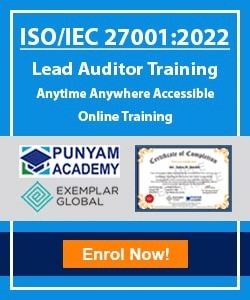
Assets come in all shapes and sizes, but one thing is for sure all organizations have assets. Assets can be a competitive advantage or can trough organization’s resources. That’s why it is significant to manage assets efficiently and ISO 55001 can do just that. ISO 55001 is especially appropriate in industries that are capital intensive, have important physical assets to manage and have high fixed costs. This can include services, heavy and light manufacturing, supply, creation, property management and transportation. ISO 55001 was published in January 2014 and founds specific requirements for not only executing and maintaining an asset, but also refining that asset via an Asset management system. ISO 55001 goals to apply this method across other sectors permitting all businesses to get advantage from it. It is designed to deliver structure and guidance to an Asset Management System (AMS) to manage and mitigate risk, while benchmarking performance across all sectors and refining financial performance in line with organizational development strategies.
Requirements of ISO 55001 Standard:
- Context of the Organization:
Meanwhile asset management is an organizational system, it is imperative that the organization takes into account the different factors that affect them. This contains the external context such as social, cultural, economic and physical environments. Regulatory, financial are other external contexts which wants to be considered. The internal context contains the organizational culture, environment, and the objectives. Understanding the organization’s stakeholders is serious to understand the balance between cost, performance risk and to be able to implement rules to confirm consistent decision-making balances those necessities.
- Leadership:
An asset management system must be controlled from the top of an organization. Without leadership the asset management systems will not be sustained, nor will it deliver the advantages to the organization and stakeholders. Leaders are essential to develop the asset management objectives with the organizational objectives, and cascade those down to everybody in the organization. Leaders at all levels must continue to not only communicate the asset management system but live it each day. They accomplish this by resourcing the organization to accomplish the objectives, define RACIs, and eliminate any barriers or conflicts that may arise.
- Planning:
The path and objectives of the organization are established during the strategic planning activities, and documented in the organization’s plan. This plan is used to grow the Strategic Asset Management Plan (SAMP). The SAMP is used to guide the development of the asset and asset management objectives, along with how to accomplish the objectives, at a high level. The SAMP is then used as guidance to develop the Asset Management Plan(s) for the several asset types. Lastly, all objectives in the Asset Management Plan should be fully associated with the organization.
- Support:
Executing the Asset Management Plan(s) requires the right level of support. This support is generally resources. The Asset Management Plan(s), will spell out the expected requirements for the several support functions. This is where cross-functional groups really come into asset management. HR & IT are serious in their support of asset management. Whether it is confirming the organization has the right abilities and competencies, or the databases to house all the asset information.
- Operations:
The Asset Management system is now able to be put into operation. It is during this phase, that the plans are executed and value appreciated from the system. During the operation of the asset management system, changes may arise to funding, risk profiles, etc., and essential to be addressed. This is all part of the operation of the asset management system. If any activities were outsourced, regardless of the reason, the organization wants to confirm those activities are conducted in an appropriate manner, associated with the business objectives.
- Performance Evaluation:
Using the objectives set forth in the SAMP, or asset management plan, the performance of not only the assets, but the asset management system desires to be evaluated. If the objectives are not being met, the reasons why want to be understood and action is taken to expand the performance. Without estimating the performance, the asset management system will likely not be able to meet the objectives of the organization. The information assembled during the performance evaluation phase should be feedback to the senior managers for use through the management review.
- Improvement:
The information collected in the performance evaluation will be used to drive enhancement in not only the assets but the asset management system as well. But the organization wants to confirm that the asset management system is being followed, therefore, it should be conducting regular assessments or audits. This will confirm the system is being followed by all those in the organization. Any non-conformities shall be documented, and corrective, or preventive actions put in place to prevent reoccurrence. Lastly, in the event that there is any type of incident, there is an opportunity to expand the asset management system. Take these incidents as a learning experience and improve any risk profiles and response plans.
ISO 55001 asset management system awareness training provide basic knowledge of ISO 55001:2014 standard, its requirements, benefits of implementing ISO 55001:2014 asset management system, ISO 55001 documentation; steps for certification and much more. This ISO 55001:2014 standard can be applied to all types of assets and by all types and sizes of organizations, therefore ISO 55001 Awareness Training can be useful for all those people who are associated with asset management services or working in any organization involved in asset management activities.






